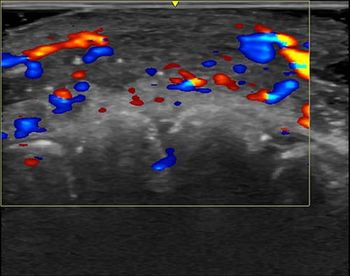
GE allies with Internet security firm
GE Medical Systems has formed an alliance with Internet Security Systems (ISS) as part of its effort to meet evolving challenges for its Web-based teleradiology and PACS offering.The alliance, announced July 18, means ISS will monitor and manage this
GE Medical Systems has formed an alliance with Internet Security Systems (ISS) as part of its effort to meet evolving challenges for its Web-based teleradiology and PACS offering.
The alliance, announced July 18, means ISS will monitor and manage this application service provider (ASP) network, which officially began beta testing in early spring. Its first use in June was to transmit images and patient data over the Internet from the University of Missouri Health Sciences Center to referring physicians off campus. The ASP is scheduled for worldwide commercial launch in 2001.
To get the network up and running, GE is partnering with several technology firms. Among them EMC, whose specialty is information storage. GE has also allied with Cisco and Oracle, two information technology companies described by GE as having the tools necessary to implement an effective information network.
ISS offers a security management system designed to continuously monitor network traffic, identifying and stopping intruders. These intruders may be unauthorized users or viruses that could compromise information confidentiality or proper system use. ISS offerings, including SAFEsuite security software and remotely managed security services, have been a part of GEs ASP from the beginning. A third-party supplier, howevernot ISShad been providing them.
We got rid of the middleman and, more important, we have agreed to evolve the ASP solution to take into consideration federal requirements as they become legislation, and evolve ISSs products specifically for our healthcare offering, said Milton Silva-Craig, general manager of e-commerce and ASP services for GE Medical Systems.
The Health Insurance Portability and Accountability Act (HIPAA) now pending in the U.S. Congress includes wide-ranging documentation and verification processes relevant to the Internet. Through its alliance with ISS, GE hopes to develop the methods and technologies that will be needed if and when this legislation is enacted.
There is still a lot of uncertainty as to what HIPAA will require, Silva-Craig said. The idea is that, as we begin to evolve more applications, we have ISS more proactively involved in the development cycles.
An example of an evolving application requiring security is three-dimensional imaging. As GE engineers build the ASPs capability to store and deliver 3-D images over the network, they will integrate security capabilities into the 3-D applications themselves, rather than implementing them only on the network. Such integration should make the network and the data more robust.
The primary customers for these services are facilities that conduct 75,000 or fewer procedures per year. Typically, these are small- to mid-size hospitals and freestanding imaging centers. Their relatively small size and limited patient volumes mean they do not have the budget or the infrastructure to implement full-blown PACS technology. GEs ASP will provide them with a low-cost alternative, Silva-Craig said. Users will pay for services on a per-use basis.
We are absolutely convinced that ASP is an excellent tool to allow information technologies like PACS to get to the massesto the midtier and low end of the (medical community), he said.
Having ISS on board as part of the planning and development of the ASP should help alleviate concerns regarding the security of Internet-based systems. Based in Atlanta, ISS is a leading security provider with more than 6000 customers worldwide. Among them are 21 of the 25 largest U.S. commercial banks, 10 of the largest telecommunications companies, and more than 35 government agencies. GE Medical Systems typifies this clientele.
On July 13, parent company General Electric reported record second-quarter results, achieving $3.38 billion in earnings on revenue of $32.9 billion. Per-share earnings increased 21% to 34¢, up 6¢ from last years second-quarter earnings of 28¢.
GE Medical Systems was among the business groups contributing the most to its parents bottom line. X-ray orders were up 96%, driven mostly by the acquisition of OEC Medical, a provider of vascular x-ray imaging. Strong demand for the companys multislice scanner, LightSpeed, boosted overall CT orders 35%. Ultrasound orders grew 40%. Domestic ultrasound sales came in above average, demonstrating 65% growth. Not yet part of the financial picture is GEMSs pending acquisition of Lunar, a vendor primarily of bone densitometers to help evaluate patients for osteoporosis and bone disease.
Newsletter
Stay at the forefront of radiology with the Diagnostic Imaging newsletter, delivering the latest news, clinical insights, and imaging advancements for today’s radiologists.




























